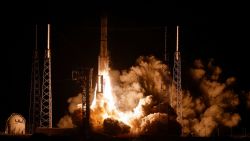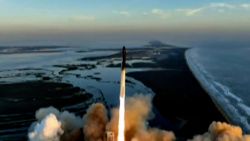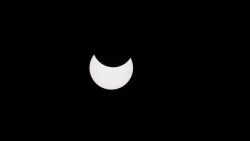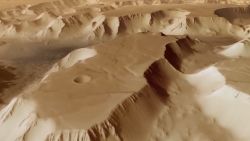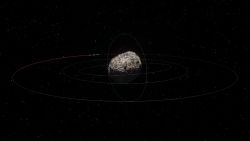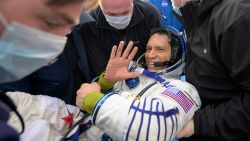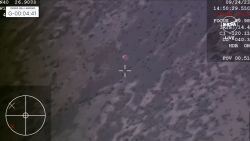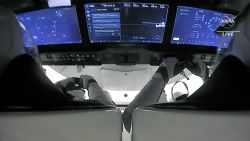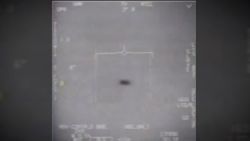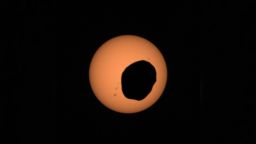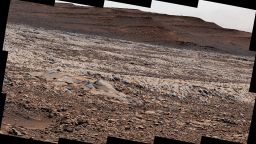Sign up for CNN’s Wonder Theory science newsletter. Explore the universe with news on fascinating discoveries, scientific advancements and more.
The Ingenuity helicopter has captured a unique bird’s-eye perspective of the gear that helped land the Perseverance rover on Mars.
During its one-year anniversary flight on April 19, the little chopper took photos of the striped parachute used during Perseverance’s landing – often referred to as “7 minutes of terror” because it happens faster than radio signals can reach Earth from Mars – on February 18, 2021. It also spotted the cone-shaped backshell that helped protect the rover and Ingenuity on the trip from Earth to Mars and during its fiery, plunging descent to the Martian surface.

The engineers working on the Mars Sample Return program, an ambitious and multimission process to return Martian samples collected by Perseverance to Earth by the 2030s, asked if Ingenuity could gather these images during its 26th flight.
Studying the components that allowed for a safe landing can help them prepare for future missions to the red planet that will require landing and even launching from the Martian surface for the first time.
“NASA extended Ingenuity flight operations to perform pioneering flights such as this,” said Teddy Tzanetos, Ingenuity’s team lead at NASA’s Jet Propulsion Laboratory in Pasadena, California, in a statement.
“Every time we’re airborne, Ingenuity covers new ground and offers a perspective no previous planetary mission could achieve. Mars Sample Return’s reconnaissance request is a perfect example of the utility of aerial platforms on Mars.”
During entry, descent and landing, the spacecraft faces scorching temperatures and gravitational forces as it plunges into the Martian atmosphere at almost 12,500 miles per hour (20,000 kilometers per hour).
Previously, we’ve only seen images of the discarded landing gear from a rover’s perspective, like an image taken by Perseverance showing the parachute and backshell from a distance. Aerial images, captured for the first time by Ingenuity from 26 feet (8 meters) in the air, provide more detail.
“Perseverance had the best-documented Mars landing in history, with cameras showing everything from parachute inflation to touchdown,” said Ian Clark, former Perseverance systems engineer and current Mars Sample Return ascent phase lead at JPL, in a statement.
“But Ingenuity’s images offer a different vantage point. If they either reinforce that our systems worked as we think they worked or provide even one dataset of engineering information we can use for Mars Sample Return planning, it will be amazing. And if not, the pictures are still phenomenal and inspiring.”

The backshell can be seen among a debris field it created after hitting the Martian surface while moving at about 78 miles per hour (126 kilometers per hour). But the backshell’s protective coating appears to be intact, as are the 80 suspension lines connecting it to the parachute.
The orange and white parachute can be seen, covered in dust, but the canopy doesn’t show any damage. It was the biggest parachute used on Mars to date, at 70.5 feet (21.5 meters) wide. The team will continue to analyze the images to determine if the parachute experienced any changes over the next several weeks.
During Ingenuity’s 26th aerial excursion, the chopper flew a total of 1,181 feet (360 meters). So far, it has logged 49 minutes of total flight time and traveled 3.9 miles (6.3 kilometers) over the past year.
“To get the shots we needed, Ingenuity did a lot of maneuvering, but we were confident because there was complicated maneuvering on flights 10, 12, and 13,” said Håvard Grip, chief pilot of Ingenuity at JPL, in a statement. “Our landing spot set us up nicely to image an area of interest for the Perseverance science team on Flight 27, near ‘Séítah’ ridge.”

The helicopter and rover have arrived at an ancient river delta where water once flowed into Jezero Crater millions of years ago.
The imposing delta rises more than 130 feet (40 meters) above the crater floor and is riddled with boulders, pockets of sand and jagged cliffs – and it could be the best place to search for signs of ancient life if it ever existed on Mars.
Ingenuity has the crucial task of surveying two dry river channels to see which one Perseverance should use to climb to the top of the delta. It can also share images of features that could become potential science targets for the rover.






